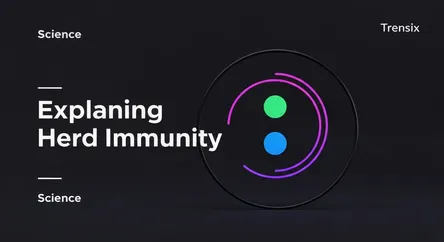Science
Explaining Herd Immunity

Discover herd immunity, the indirect protection from disease that occurs when a large percentage of a population has become immune.
What is it?
Herd immunity, also known as community immunity, is a form of indirect protection from infectious diseases. It occurs when a sufficiently high proportion of a population is immune to an infection, whether through vaccination or previous infection, thereby providing a measure of protection for individuals who are not immune. When the number of immune individuals reaches a critical threshold, the chain of transmission is disrupted, making it difficult for the disease to spread. This threshold varies depending on the contagiousness of the disease; for example, the highly contagious measles virus requires about 95% of the population to be immune to achieve herd immunity.
Why is it trending?
The concept of herd immunity became a major topic of global discussion during the COVID-19 pandemic. Governments and public health officials worldwide grappled with strategies to control the virus's spread, with vaccination campaigns being the primary tool to safely achieve herd immunity. Debates have centered on the effectiveness of vaccines against new variants and the ethical considerations of relying on natural infection versus vaccination. The ongoing conversation about vaccine mandates and booster shots keeps the topic relevant as societies navigate the path to normalcy.
How does it affect people?
Herd immunity is crucial for protecting the most vulnerable members of society. This includes infants too young to be vaccinated, pregnant women, the elderly, and individuals with compromised immune systems who cannot receive certain vaccines or may not mount a strong immune response. When herd immunity is strong, these individuals are shielded because the pathogen has fewer opportunities to circulate and reach them. Conversely, a decline in vaccination rates can weaken herd immunity, leading to resurgences of preventable diseases like measles and whooping cough, posing a direct threat to public health.